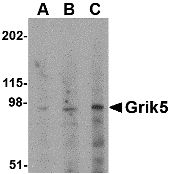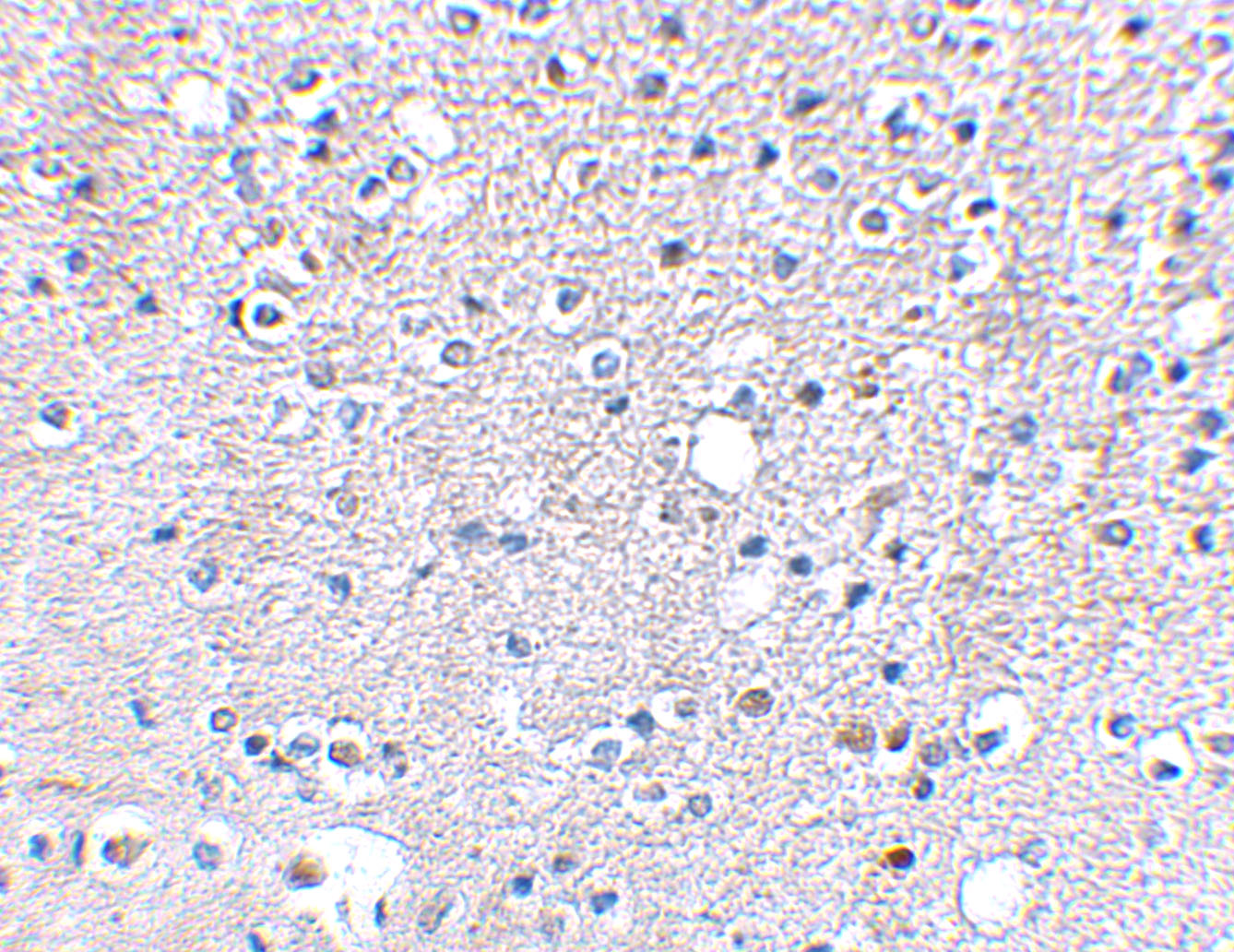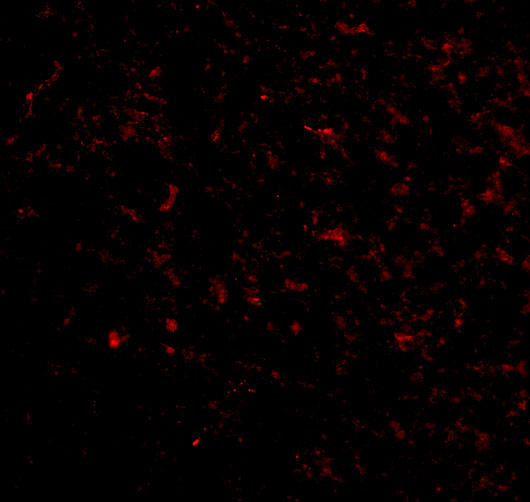Grik5 Antibody
| Code | Size | Price |
|---|
| PSI-4397-0.02mg | 0.02mg | £150.00 |
Quantity:
| PSI-4397-0.1mg | 0.1mg | £449.00 |
Quantity:
Prices exclude any Taxes / VAT
Overview
Host Type: Rabbit
Antibody Isotype: IgG
Antibody Clonality: Polyclonal
Regulatory Status: RUO
Applications:
- Enzyme-Linked Immunosorbent Assay (ELISA)
- Immunofluorescence (IF)
- Immunohistochemistry (IHC)
- Western Blot (WB)
Images
Documents
Further Information
Additional Names:
Grik5 Antibody: KA2, EAA2, GRIK2, GluK5, Glutamate receptor ionotropic, kainate 5, Excitatory amino acid receptor 2
Application Note:
Grik5 antibody can be used for detection of Grik5 by Western blot at 0.5 - 2 μg/mL. Antibody can also be used for immunohistochemistry starting at 2.5 μg/mL. For immunofluorescence start at 20 μg/mL.
Antibody validated: Western Blot in human samples; Immunohistochemistry in human samples and Immunofluorescence in human samples. All other applications and species not yet tested.
Antibody validated: Western Blot in human samples; Immunohistochemistry in human samples and Immunofluorescence in human samples. All other applications and species not yet tested.
Background:
Grik5 Antibody: Glutamate receptors are the predominant excitatory neurotransmitter receptors in the mammalian brain and are activated in a variety of normal neurophysiologic processes. Grik5, also known as kainate-preferring glutamate recptor subunit KA2, belongs to the kainate family of glutamate receptors, which are composed of four subunits and function as ligand-activated ion channels. Grik5 is highly homologous to the related ionotrophic glutamate receptor Grik4 (also known as KA1). Like Grik4, Grik5 does not form homomeric channels, but instead forms heteromers with Grik2. In Grik2- but not Grik1-null mice, Grik5 surface expression is greatly reduced in neurons, indicating that Grik2/Grik5 heteromers are required for exit from the endoplasmic reticulum to the cell surface.
Background References:
- Tanaka K. Functions of glutamate transports in the brain. Neurosci. Res.2000; 37:15-9.
- Herb A, Burnashev N, Werner P, et al. The KA-2 subunit of excitatory amino acid receptors shows widespread expression in brain and forms ion channels with distantly related subunits. Neuron1992; 8:775-85.
- Pinheiro P and Mulle C. Kainate receptors. Cell Tissue Res.2006; 326:457-82.
- Nasu-Nishimura Y, Hurtado D, Braud S, et al. Tification of an endoplasmic reticulum-retention motif in an intracellular loop of the kainate receptor subunit KA2. J. Neurosci.2006; 26:7014-21.
Buffer:
Grik5 Antibody is supplied in PBS containing 0.02% sodium azide.
Concentration:
1 mg/mL
Conjugate:
Unconjugated
DISCLAIMER:
Optimal dilutions/concentrations should be determined by the end user. The information provided is a guideline for product use. This product is for research use only.
Immunogen:
Grik5 antibody was raised against a 17 amino acid synthetic peptide near the carboxy terminus of the human Grik5.
The immunogen is located within the last 50 amino acids of Grik5.
The immunogen is located within the last 50 amino acids of Grik5.
NCBI Gene ID #:
2901
NCBI Official Name:
glutamate receptor, ionotropic, kainate 5
NCBI Official Symbol:
GRIK5
NCBI Organism:
Homo sapiens
Physical State:
Liquid
Protein Accession #:
NP_002079
Protein GI Number:
29029597
Purification:
Grik5 Antibody is affinity chromatography purified via peptide column.
Research Area:
Neuroscience
SPECIFICITY:
This Grik5 antibody does not cross-react with Grik4.
Swissprot #:
Q16478
User NOte:
Optimal dilutions for each application to be determined by the researcher.
Related Products
| Product Name | Product Code | Supplier | Grik5 Peptide | PSI-4397P | ProSci | Summary Details | |||||||||||||||||||||||||||||||||||||||||||||||||||||||||||||||||||||||||||||||||||||||||||||
|---|---|---|---|---|---|---|---|---|---|---|---|---|---|---|---|---|---|---|---|---|---|---|---|---|---|---|---|---|---|---|---|---|---|---|---|---|---|---|---|---|---|---|---|---|---|---|---|---|---|---|---|---|---|---|---|---|---|---|---|---|---|---|---|---|---|---|---|---|---|---|---|---|---|---|---|---|---|---|---|---|---|---|---|---|---|---|---|---|---|---|---|---|---|---|---|---|---|---|---|





